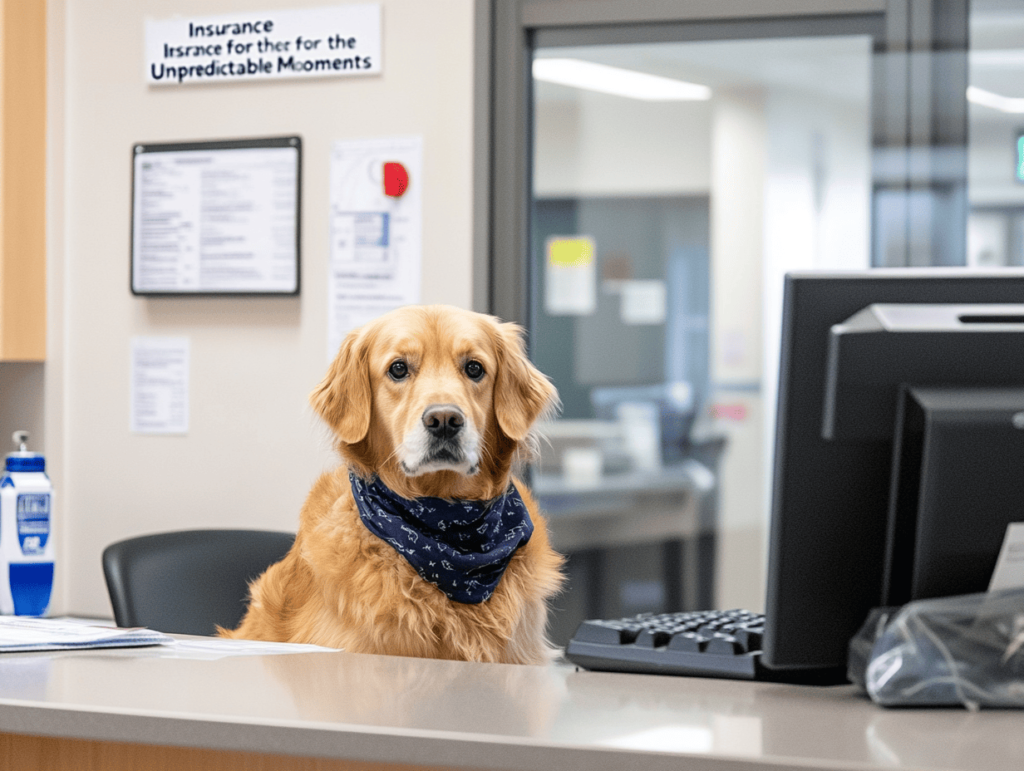Emergency pet insurance is essential for protecting your pet and your finances. Unexpected emergencies can happen at any time, leading to costly vet bills. Without coverage, these expenses can create a financial burden. Emergency pet insurance helps by covering sudden accidents, illnesses, and urgent treatments. It ensures your pet gets the care they need without delay. The cost of emergency vet care can be overwhelming, especially for surgeries, hospitalizations, or specialized treatments. Having insurance means you won’t have to choose between your pet’s health and your budget. It provides peace of mind, knowing you’re prepared for the unexpected. Learn more about how emergency pet insurance can safeguard your pet’s well-being.
1. Understanding the Vital Role of Emergency Pet Insurance
The Unpredictability of Pet Emergencies
Pet emergencies can happen in an instant. One moment, your pet is fine; the next, they’re in a life-threatening situation. Dogs and cats can swallow foreign objects, leading to dangerous intestinal blockages. Car accidents can cause severe injuries that require immediate surgery. Some conditions, like bloat in dogs, develop rapidly and can be fatal without quick medical intervention. These unpredictable emergencies highlight the importance of being prepared. Without a plan, pet owners may struggle to make fast decisions in critical moments.
The High Cost of Veterinary Care
Emergency veterinary care is expensive. A single surgery can cost over $3,000, depending on the complexity. Hospitalization can add $800 to $2,000 per day to the bill. Diagnostic tests, like MRI scans, range from $1,500 to $2,500. These costs can quickly become overwhelming. Many pet owners are unprepared for such expenses, making it difficult to afford urgent treatment. Without financial support, some may be forced to choose between lifesaving care and their budget.
Financial Protection and Peace of Mind
Emergency pet insurance helps cover unexpected medical costs. It ensures that finances don’t dictate a pet’s treatment. Instead of worrying about affordability, owners can focus on their pet’s recovery. Having insurance also provides peace of mind. Knowing that coverage is in place allows pet parents to act quickly in emergencies. This reduces stress and ensures pets receive the best possible care when they need it most.
How Emergency Pet Insurance Works
Understanding how pet insurance works is essential before choosing a policy. Most plans cover accidents, illnesses, and emergency surgeries. Coverage typically begins after meeting a deductible, which varies by plan. Some insurers, like Nationwide, offer comprehensive plans that include accident and illness coverage. If a pet swallows a toy or develops a sudden illness, insurance helps cover medical costs. This safety net ensures that emergency care is accessible when needed.
Benefits Beyond Financial Aid
Pet insurance does more than cover expenses. It encourages timely vet visits, leading to earlier diagnoses and better treatment outcomes. When owners know they have coverage, they’re more likely to seek medical attention at the first sign of illness. This proactive approach can prevent conditions from worsening. Additionally, insurance relieves anxiety about future health crises. Owners can focus on enjoying time with their pets rather than stressing over potential medical bills.
Making Informed Choices
Choosing the right emergency pet insurance requires research. Policies vary in coverage, deductibles, and reimbursement rates. Websites like Pet Insurance Review provide comparisons and customer feedback to help owners make informed decisions. It’s important to select a policy that fits both a pet’s needs and an owner’s budget. The right plan ensures financial security while guaranteeing that pets receive the care they deserve.
Emergency pet insurance is more than just a financial tool—it’s a lifeline. It protects pets by making urgent medical care accessible and affordable. Without it, high vet bills can force difficult decisions. With it, owners can prioritize their pet’s health without financial worry. Investing in pet insurance provides peace of mind, ensuring that pets receive the best possible care in critical situations.

2. What Does Emergency Pet Insurance Cover?
Emergency pet insurance can be a lifesaver when your pet faces unexpected health issues. It helps reduce the financial stress of urgent veterinary care, allowing you to focus on your pet’s well-being instead of worrying about costs.
Covered Emergencies
Pet emergencies happen suddenly. This insurance typically covers accidents, injuries, sudden illnesses, poisoning, allergic reactions, broken bones, and heatstroke. If your dog eats something toxic or your cat suffers a bad fall, having emergency pet insurance ensures you can afford the necessary care. Knowing you have coverage can provide peace of mind during stressful situations.
Diagnostic Testing and Treatment
When an emergency occurs, quick diagnosis and treatment are crucial. Most emergency pet insurance plans cover x-rays, ultrasounds, blood work, surgery, hospitalization, and medications. For example, if your pet is in an accident and needs an x-ray, insurance can help cover the cost. Emergency surgeries, hospital stays, and prescribed medications are usually included as well. These treatments can be expensive, but with the right insurance, your pet can receive prompt and effective care.
Different Coverage Levels
Not all emergency pet insurance policies offer the same benefits. Coverage varies based on factors like reimbursement percentages, deductibles, and coverage limits. Reimbursement percentages determine how much of the vet bill the insurer pays. Deductibles are the amount you must pay before your insurance starts covering expenses. Annual and lifetime limits cap the total amount your insurer will pay within a certain period.
Pre-existing conditions are usually not covered. To maximize benefits, it’s best to enroll your pet early before any health issues arise. Websites like PetInsuranceReview can help compare different plans, making it easier to find one that suits your budget and your pet’s needs.
Choosing the Right Plan
Emergency pet insurance is essential for protecting your pet’s health. It covers common emergencies, diagnostic tests, and treatments, ensuring your pet receives the best care when needed. Choosing the right coverage level is key. Take time to compare policies, understand the terms, and select a plan that balances cost and benefits. By doing so, you can safeguard your pet’s future without financial strain.
3. Choosing the Best Emergency Pet Insurance Plan
Compare Pet Insurance Providers
When selecting emergency pet insurance, start by comparing different providers. Several reputable companies offer various plans. Trupanion provides comprehensive coverage with a quick reimbursement process. Embrace tailors policies to fit your pet’s needs. The ASPCA offers plans aligned with its mission of animal welfare. Nationwide covers a wide range of medical conditions. Healthy Paws stands out with a simple claims process. Each company has unique features. Taking time to compare them helps you find the best fit for your pet’s health requirements. For a detailed comparison, visit PetInsuranceReview.
Consider Coverage Options and Costs
Understanding costs is crucial when choosing emergency pet insurance. First, consider deductibles. This is the amount you must pay before coverage starts. Next, check co-pays. These are additional fees after meeting the deductible. Reimbursement percentages show how much of the vet bill the insurer covers. Annual limits cap how much the provider will pay each year. Monthly premiums are regular payments to keep the policy active. Evaluating these factors helps balance cost and coverage.
Deductibles and Co-Pays
Deductibles vary by insurer. Some offer low deductibles but higher premiums. Others have high deductibles with lower monthly payments. Co-pays work similarly. Choosing the right balance helps manage your budget. For example, a $500 deductible means you pay this amount before insurance kicks in. Knowing these details ensures you’re financially prepared for emergencies.
Reimbursement Percentages and Annual Limits
Reimbursement percentages determine how much the insurer covers. A 90% reimbursement means they pay 90% of eligible expenses. However, annual limits cap total payouts. If the limit is $10,000 per year, the insurer won’t cover more than that amount. Understanding these limits prevents unexpected costs.
Monthly Premiums
Monthly premiums depend on coverage levels, pet age, and breed. Higher premiums often mean better coverage. Weigh the benefits against the cost to make an informed choice. Check reviews on ConsumerAffairs to see if a plan offers good value.
Read the Fine Print
Before choosing emergency pet insurance, read the policy details carefully. Pay attention to waiting periods. These are times before coverage starts. Pre-existing conditions may not be covered. Some policies exclude specific treatments. Knowing what isn’t covered prevents surprises later.
Understand Waiting Periods
Waiting periods range from a few days to months. During this time, you pay all veterinary costs. Some insurers have a two-week waiting period for accidents but longer for illnesses. Understanding this helps you plan.
Pre-Existing Conditions
Most policies exclude pre-existing conditions. If your pet has a chronic illness, it likely won’t be covered. Getting insurance early protects against future issues. Always ask about specific exclusions.
Customer Reviews and Ratings
Customer reviews provide insight into an insurer’s reliability. Positive reviews indicate good service and fair claims processing. Negative feedback highlights potential issues. Sites like Trustpilot help assess different providers.
By comparing providers, understanding coverage options, and reading the fine print, you can find the best emergency pet insurance for your pet. A well-chosen plan ensures your pet gets care when needed, giving you peace of mind.

4. How to Use Emergency Pet Insurance in an Emergency
When your pet needs urgent medical care, knowing how to use your emergency pet insurance can reduce stress. Start by contacting your insurance provider right away. They will guide you through the process and help you take the necessary steps. Let them know your pet’s condition and that you need immediate medical attention.
Reaching out quickly is essential. The sooner you notify your insurer, the better they can assist. Some providers may recommend a nearby veterinary clinic equipped for emergencies. Choosing the right facility ensures your pet gets the care they need without unnecessary delays.
Filing a Claim
Once your pet receives medical care, focus on filing a claim with your insurance provider. The process requires submitting important documents, so gathering them promptly is crucial. You will need:
- Veterinary bills related to the emergency
- Medical records detailing your pet’s condition and treatment
- Any other documents required by your insurer
Make sure your paperwork is complete and accurate. Missing details can delay claim approval. Submit your claim as soon as possible, as some insurers have deadlines for claim submissions. Most providers offer online portals where you can upload documents quickly. If using traditional mail, keep copies of everything for your records.
Direct Billing vs. Reimbursement
Emergency pet insurance typically follows one of two payment models: direct billing or reimbursement.
With direct billing, your veterinarian sends the bill directly to your insurance provider. This method reduces your out-of-pocket costs and simplifies the process. However, not all vets accept direct billing, so check with your provider in advance.
With reimbursement, you pay the veterinary bill upfront and then file a claim for compensation. Once approved, your insurer reimburses you for covered expenses. While this option requires an initial payment, it is the most common system used by pet insurance providers.
Understanding these payment methods helps you plan financially. Before an emergency happens, ask your insurance provider which model they use. This knowledge will help you manage expectations and avoid surprises. For more details on emergency pet insurance, visit ASPCA Pet Insurance to compare policies and coverage options.
5. Frequently Asked Questions About Emergency Pet Insurance
Is Emergency Pet Insurance Worth It?
Emergency pet insurance can be a smart investment. It helps cover unexpected veterinary costs, which can add up quickly. Without insurance, many pet owners struggle to afford emergency care. The cost of emergency pet insurance depends on factors like your pet’s age, breed, and location. Some plans may seem expensive at first. However, they can save you thousands in the long run. Paying a monthly premium is often more manageable than facing a sudden, high bill. To compare plans and read customer reviews, visit PetInsuranceReview.
When Should I Get Pet Insurance?
The best time to get pet insurance is before an emergency happens. If you wait until your pet needs care, you may face exclusions. Most insurance companies do not cover pre-existing conditions. Getting coverage early ensures that your pet is fully protected. Unexpected illnesses or injuries can happen at any time. With emergency pet insurance, you can focus on your pet’s health instead of worrying about the cost. Acting early provides peace of mind and financial security. For expert tips on choosing the right policy, visit The Spruce Pets.
What About Pre-Existing Conditions?
Pre-existing conditions are one of the biggest concerns in pet insurance. Insurers define these as health issues that existed before your policy started. Most emergency pet insurance plans do not cover them. This exclusion helps companies manage risk and prevent fraud. However, some policies offer limited coverage under certain conditions. Always read the policy details carefully. Know what is included and what is not. Ask questions if you’re unsure. This helps you make an informed decision. To learn more about coverage options, check out PetPlan.
How Much Does Emergency Pet Insurance Cost?
The cost of emergency pet insurance varies. Several factors affect the price. Older pets usually have higher premiums. Certain breeds may cost more to insure due to genetic health risks. Your location also plays a role. Urban areas may have higher rates than rural ones. The level of coverage you choose affects your monthly premium. Basic plans cost less but offer limited benefits. Comprehensive plans provide better coverage but come at a higher price. On average, pet owners pay between $20 and $50 per month. Prices can change based on individual circumstances. To compare different policies and find the best fit, visit NerdWallet.
Understanding these key aspects can help you decide if emergency pet insurance is right for you.
